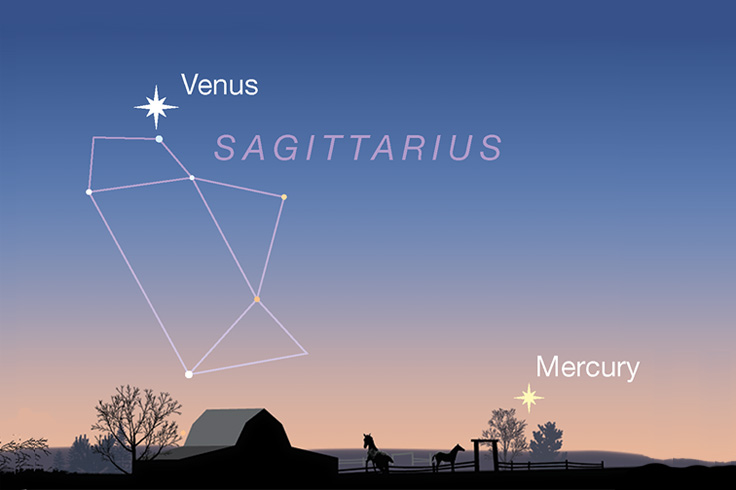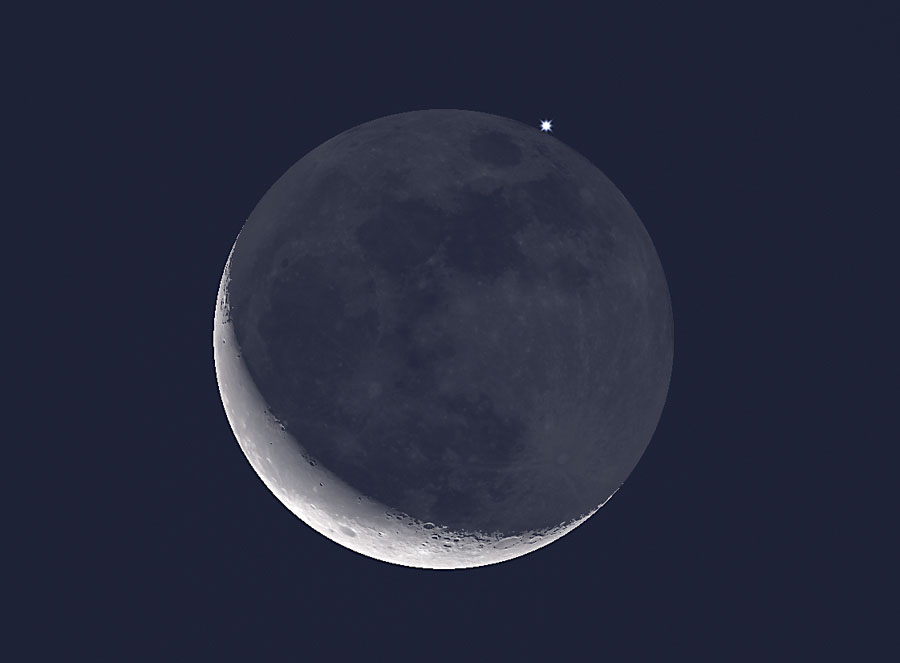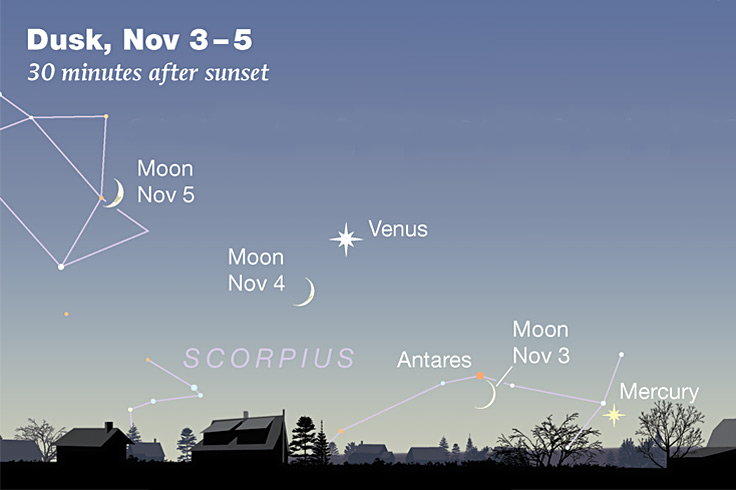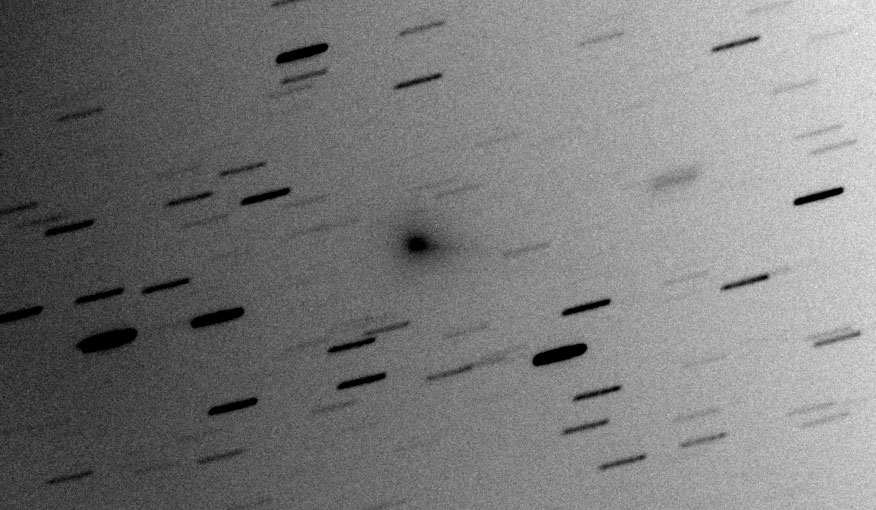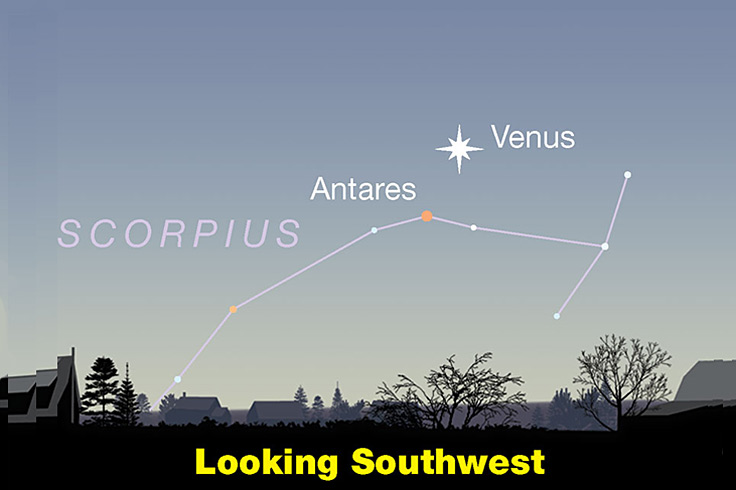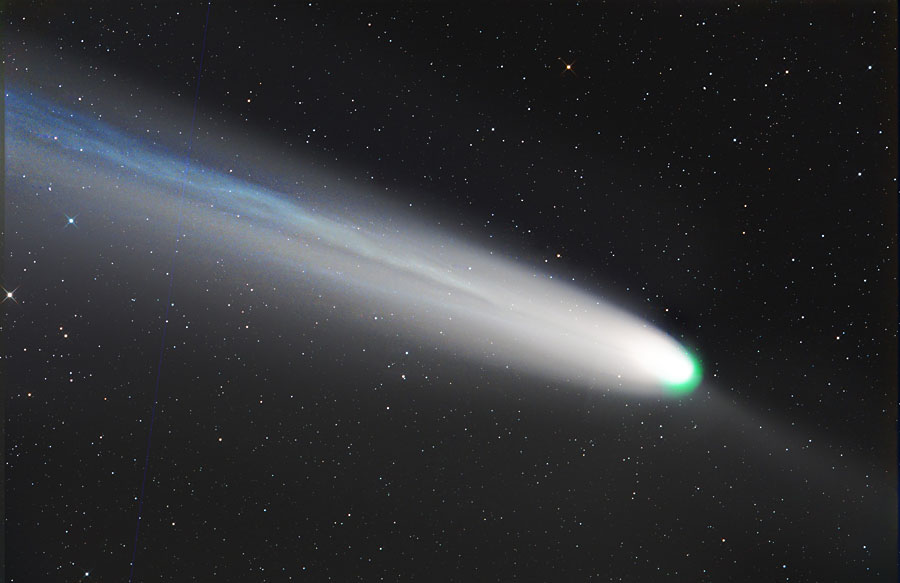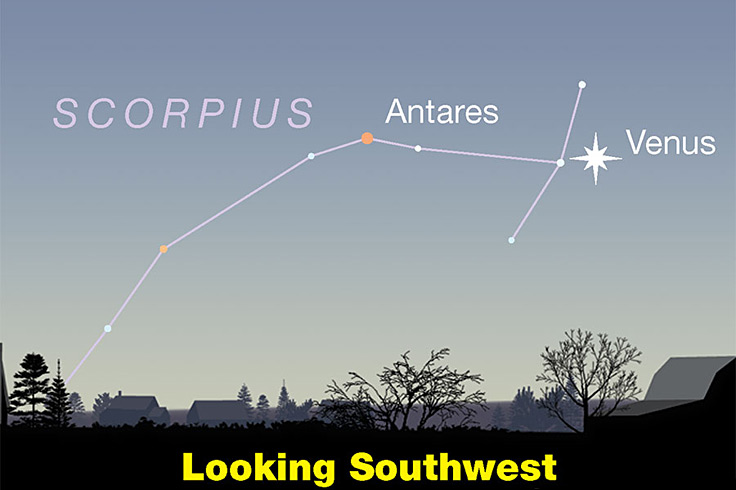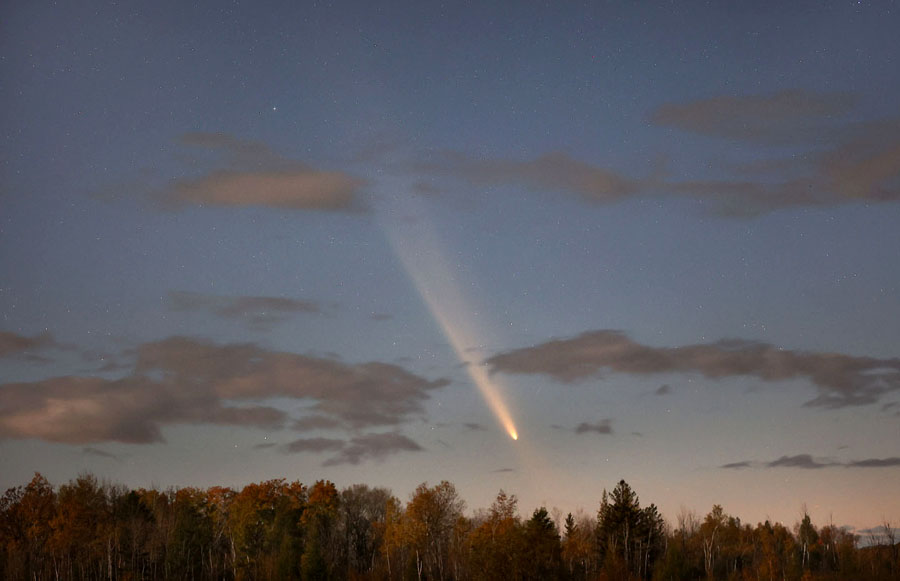FRIDAY, NOVEMBER 22 ■ This evening may be your last chance to spot Mercury in twilight this year. Try for it 21° (about two fists at arm’s length) lower right of brilliant Venus about 30 to 45 minutes after sunset, as shown below. Every day now Mercury fades and sinks. Its next evening apparition won’t […]
FRIDAY, NOVEMBER 15 ■ Mercury is still at the best and brightest it will be during its current low, mediocre evening apparition. As twilight fades, see if you can catch Mercury nearly two fists to the lower right of Venus in the southwest, as shown below. Mercury shines at magnitude –0.2 compared to Venus’s mag […]
Rich in cyclic phenomena, astronomy has always been fertile ground for metaphors. Lunar occultations are a good example. When the Moon temporarily hides and then reveals a star, death and resurrection might come to mind. Or something less profound like a game of peekaboo. Both fit. It’s one of my favorite facets of the hobby […]
November fireballs? Each year from roughly late October through mid-November, a dazzling Taurid meteor just might take you by surprise in the night. If you get very lucky. Normally the broad, weak, South and North Taurid meteor showers sputter along with maybe 5 or 10 ordinary little meteors visible per hour even under ideal moonless […]
FRIDAY, NOVEMBER 1 ■ November fireballs? Every year from roughly late October through mid-November, a truly dazzling Taurid meteor just might take you by surprise in the night. If you get very lucky. A Taurid fireball caught streaking over Skibotn, Norway, in 2020. Medisilvanus / Wikimedia Commons Normally the broad, weak, South and North Taurid […]
Update (October 28. 2024) Comet ATLAS has indeed not survived perihelion. The Solar and Heliospheric Observatory (SOHO) captured its demise. SOHO uses a disc called a coronagraph to cover the face of the Sun in order to image fainter objects, such as Comet ATLAS, which is imaged fading and disappearing at its closest approach to […]
Comet Tsuchinshan-ATLAS (pronounced “tzeh-chin-SHAHN”) continues to shrink and fade as it recedes into the distance in the western sky right after nightfall. It’s still a fine target for binoculars and telescopes, moderately high in Ophiuchus in moonless darkness. See Bob King’s latest update, Grab Comet Tsuchinshan-ATLAS by the Tail, including a finder chart running through […]
The coma glows green from diatomic carbon (C2) emission, while the blue ion and white dust tails nearly overlap on October 19th. Image details: ASA Astrograph 12-inch, f/3.6 and ZWO ASI 6200MM Pro camera Gerald Rhemann Comet Tsuchinshan-ATLAS has been wonderful. I’ve rarely seen so much interest in a comet, with first-time skywatchers getting such […]
Comet Tsuchinshan-ATLAS (pronounced “tzeh-chin-SHAHN”) is still in good evening view high in the west for Northern Hemisphere skywatchers, though it’s both fading and shrinking as it flies away from the Sun and Earth. Moonlight has been compromising the view; full Moon (a supermoon no less!) came on the evenings of October 16th and 17th. But […]
Comet Tsuchinshan-ATLAS (C/2023 A3) was a beautiful naked-eye and binocular sight at dusk on October 13th from near McGregor, Minnesota, about 90 minutes after sundown. The tail extended 7° in binoculars and 5° with the naked eye — even in bright moonlight! A faint segment of the antitail glows pink below and right of the […]
